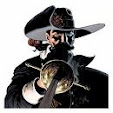Juan Rodríguez Cabrillo sailed along the coast of California between 1542 and 1543, discovering San Diego and Monterey Bays. After he died as a result of a confrontation with the Indians, the expedition continued under the command of Bartolomé Ferrelo. It reached Cape Mendocino and sailed further north along the Oregon coast.
Since 1565, Spanish galleons crossed the Pacific between Acapulco and Manila once a year in each direction, thus initiating a first financial and commercial globalization between Asia, America and Europe. The trip from Acapulco to Manila took about three months and a stopover was made on the island of Guam, whereas the voyage from Manila to Acapulco was a very tough journey that could take four to six months. They would cross the Pacific with no stopovers and the first point of the American continent that they would sight was the aforementioned Cape Mendocino. From there the galleons made a relatively easy voyage, making use of the California Current. Finding a safe stopover right after crossing the ocean would be of great use. The galleons of 1584, 1587 and 1595 had instructions to explore that coast, but they were not able to find the desired refuge. |
| For 250 years, the Manila galleons sailed parallel to the California coast. Tornaviaje [The Return Trip]. Painting by Carlos Parrilla Penagos. |
Visitador General of New Spain José de Gálvez deemed the Russian advance from Alaska southward along the Pacific coast to be a threat, so in 1767 he promoted the expansion of Spain into Alta California. Vizcaíno's maps were dusted off and two expeditions were sent in 1769. One set out by sea from the port of San Blas, in present-day Mexican Nayarit state, and another by land from Baja California. After reaching Alta California, Gaspar de Portolá set out by land from San Diego Bay looking for Monterey Bay, but actually ended up at San Francisco Bay. It had gone unnoticed for over two centuries, not only to Cabrillo, Ferrelo and Vizcaíno, but also to the Manila galleons which sailed through those waters year after year.
The news of a Russian and also an English presence north of Cape Mendocino led to the start of a series of Spanish naval expeditions in the North Pacific with the aim of reconnoitering, mapping and taking possession of the discovered lands.
The first expedition, captained by Juan Pérez Hernández with Esteban José Martínez as first officer, took place in 1774. Given the limited results obtained due to the very adverse meteorology and currents, another one had to be organized.
In 1775, the second expedition discovered and mapped the mouth of the Columbia River. It was commanded by Bruno de Heceta and its members included Juan Pérez Hernández, Juan de la Bodega y Quadra from Lima and Francisco Antonio Mourelle. They crossed the Strait of Juan de Fuca in the state of Washington and shortly after Heceta had to return due to scurvy. De la Bodega and Mourelle continued sailing to parallel 58, finally in Alaska, discovering Bucarelli Bay.
The third expedition took place in 1779. It was under the command of Ignacio de Arteaga y Bazán, and once again Juan de la Bodega and Francisco Antonio Mourelle took part in it. It was intended to assess Russian penetration into Alaska, to seek the Northwest Passage (supposed route that would allow crossing the continent from the north, just as the Strait of Magellan did from the south) and to capture James Cook, if he was found in Spanish waters.
The fourth expedition, captained by Esteban José Martinez, reached the anchorage of small island of Nootka, located along the south-western coast of Vancouver Island in 1788. Here they established Fort San Miguel and the bastion of San Rafael, beating the English to it. The Spanish flag flew there until 1795, after the signing of the third Nootka Convention; Juan de la Bodega represented Spain in its negotiations. Both nations provisionally renounced the sovereignty of that enclave.
 |
| Recalada en Nutca [Landing at Nootka]. Painting by Carlos Parrilla Penagos. |
 |
| Course of Corvettes Atrevida and Descubierta of the Malaspina Expedition. Source: Iván Hernández Cazorla (Wikimedia Commons). |







%20hundi%C3%A9ndose.jpg)

No hay comentarios:
Publicar un comentario